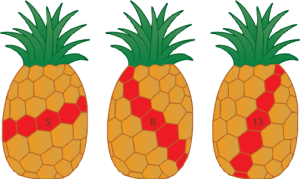Have you ever wondered just how perfect you are? Many students found out on November 23, “Fibonacci Day.” Jesuit students could participate in a variety of activities pertaining to Leonardo Pisano’s sequence of numbers.
The event was organized by Mu Alpha Theta, Jesuit’s math club, commemorating Pisano’s sequence of numbers on 11/23 because those are its first 4 terms in the sequence. “The Fibonacci Sequence is a really interesting one with a lot of applications, so 11/23 was a perfect choice,” said Mrs. Gerber, a math teacher at Jesuit and the moderator of Mu Alpha Theta. This is the first time Jesuit has celebrated the aptly named Fibonacci Day. “As a growing club, Mu Alpha Theta is looking for ways to expand the math club beyond just the UIL competition that used to be its sole focus,” Mrs. Gerber explained. She said that the club wanted to have a day in the fall similar to Pi Day, which is celebrated on 3/14.
What is the Fibonacci sequence though? It is a sequence in which each term is the sum of the previous two (1, 1, 2, 3, 5, 8, 13…). Discovered by Leonardo Pisano (later Fibonacci, or “son of Bonaccio”) in the twelfth century, it appears in many different, unexpected places. “In the cafeteria, I showed people how the Fibonacci sequence shows up in nature all the time,” said Ryan Davis ’18. He demonstrated how every perfect pineapple has a number from the Fibonacci sequence in it. “I know at least 50 people came over to see what the heck was going on with the pineapples in the cafeteria,” Mrs. Gerber joked. “Poking 6 pineapples with colored thumbtacks tends to draw some attention.”

Elsewhere in the Math Lab, there were worksheets on which you recorded various measurements of parts of your body. You could divide measurements into others and see if the quotient equaled the Golden Ratio, a number sometimes used to define beauty and perfection. The Golden Ratio, 0.618034, is another example of the Fibonacci sequence showing up in nature. For instance, sunflowers grow seeds in spirals to fit the maximum amount on their heads. Each spiral starts after a 0.618034 degree turn (out of a circle) from the previous one. Additionally, the number of spirals on a sunflower is almost always a Fibonacci number.
Overall, Mrs. Gerber thought that the day was a success. “It just prompted curiosity which was our overall goal,” she said. Members of Mu Alpha Theta were thankful for the experience as well. Jose Rivera ’16 acknowledged that it was a team effort and added that Mrs. Gerber worked very hard at putting it all together.” Fibonacci Day should cement itself as a Jesuit tradition in the years to come.






